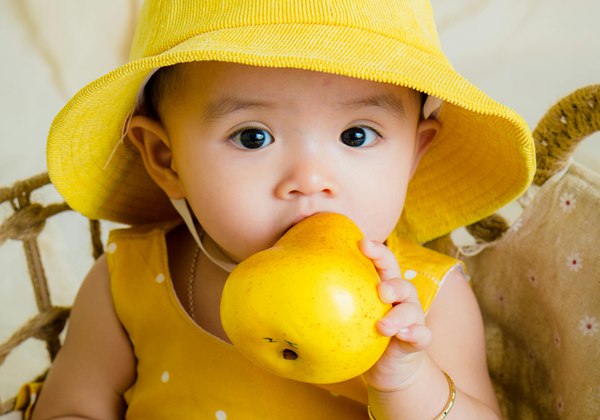代孕和收养有什么区别?流程、费用全解读!

你是否正在考虑领养或代孕?这两种方式都是组建家庭的好方法,但它们有很大的不同。本文将帮助你了解两者的步骤、费用和情感因素。我们还将回答常见问题。
什么是领养和代孕?
领养
领养是一种法律行为,指一个人或一对夫妇通过合法程序成为孩子的父母。被领养的孩子通常来自生父母无法抚养的情况,例如孤儿、弃婴或因特殊困难而无法抚养孩子的家庭。
- 法律保障:在中国,收养法明确规定,收养必须遵循平等自愿的原则,并不得违背社会公德。
- 适用人群:单身人士、夫妻、甚至性少数群体(LGBTQ+)都可以通过领养组建家庭。
代孕
代孕是指一位女性(代孕母亲)为他人怀孕并生下孩子,孩子出生后由意向父母抚养。代孕分为两种类型:
- 传统代孕:代孕母亲使用自己的卵子与意向父亲的精子结合。
- 妊娠代孕:代孕母亲仅作为“载体”,胚胎由意向父母的卵子和精子通过体外受精(IVF)技术形成。
法律现状:中国目前尚未明确允许商业代孕,但在一些国家(如吉尔吉斯斯坦),代孕是合法且受到严格监管的。
领养与代孕的主要区别
法律框架
领养和代孕在法律框架上存在显著差异。领养需终止生父母的法律权利,意向父母在完成法律手续后才能获得监护权。而代孕通过合同确立意向父母的权利,孩子出生后直接列在意向父母的出生证明上。
父母权利
在父母权利方面,领养的意向父母需在完成法律程序后才获得父母权利,生母在同意之前保留所有权利。而代孕则通过协议提前确立意向父母的法律地位,避免了复杂的权利转移过程。

费用
费用是两者的重要区别之一。以下是具体数据对比:
| 项目 | 国内领养 | 国际领养 | 代孕 |
|---|---|---|---|
| 费用范围 | 2万至4.5万美元 | 2.5万至6万美元 | 5.5万至20万美元 |
过程时长
领养和代孕的过程时长也有所不同。国内领养通常需要1-2年,国际领养可能需要1-3年,具体时间取决于国家政策 。而代孕从寻找代孕母亲到孩子出生,整个过程大约需要1.5-2年。
财务考量
领养费用
领养的费用因类型和国家而异,以下为主要费用构成:
| 费用类别 | 金额范围(美元) | 说明 |
|---|---|---|
| 机构费用 | 约4,500–22,000 | 支付给领养机构的服务费,包括匹配生母或孩子的相关服务 。 |
| 法律费用 | 约300–800 | 处理法律文件、公证及登记的费用,收费标准由国家规定。 |
| 家庭评估费用 | 约150–450 | 包括背景调查、家访等评估工作,部分地区由政府预算承担。 |
| 其他支持费用 | 约800–3,000 | 涉外领养可能涉及额外捐赠款,如福利院收取约5,400美元。 |
代孕费用
代孕的费用较高且复杂,主要包括以下几个部分:
| 费用类别 | 金额范围(美元) | 说明 |
|---|---|---|
| 医疗费用 | 约20,000–55,000 | 包括体外受精(IVF)、胚胎移植及其他医疗程序的费用。 |
| 代孕母亲补偿 | 约30,000–90,000 | 支付代孕母亲的生活补贴和劳动报酬,视地区和协议而定。 |
| 法律费用 | 约8,000–15,000 | 起草和签署代孕合同的费用,确保意向父母的法律权益。 |
| 保险和融资 | 视具体计划而定 | 一些公司提供代孕专属保险和融资方案,帮助分担高昂成本。 |
以上费用为参考范围,实际支出可能因个人情况和地区政策有所不同。
情感和心理影响
对准父母的影响
领养:
领养的过程可能充满期待,但也伴随着不确定性,特别是国际领养,等待时间可能较长且结果难以预测。这种不确定性可能导致准父母感到焦虑或压力。为了应对这些情绪波动,许多领养机构建议准父母接受心理咨询,帮助他们调整心态并更好地适应未来的角色转变。此外,与生母的沟通也可能引发复杂的情感,需要通过专业支持来平衡各方的心理需求。

代孕:
在代孕过程中,准父母对怀孕有更多控制权,例如选择胚胎、参与产检等,这让他们感到更安心。然而,孕期的不可控因素(如并发症或意外情况)仍可能引发焦虑。特别是在孩子出生前,准父母可能会担心与宝宝的情感联系是否足够紧密,但研究表明,通过爱与陪伴,这种担忧通常可以被化解。因此,心理准备和情感支持在代孕过程中尤为重要。
对生母/代孕母亲的影响
领养中的生母:
生母在放弃孩子后,可能会经历悲伤、内疚甚至失落感,这种情感反应是正常的,但需要专业的心理支持来缓解。许多领养机构会为生母提供咨询和后续支持,帮助她们度过这一艰难阶段。
代孕母亲:
代孕母亲在开始代孕前需接受严格的心理评估,以确保她能够承受怀孕期间的身体和心理压力。尽管代孕是一种合作行为,但代孕母亲可能也会对胎儿产生情感纽带,因此需要清晰的界限和专业指导来处理这些复杂情感。
法律和伦理考量
领养法律
中国法律:根据《收养法》,收养的核心原则是保护未成年人的利益,确保被收养儿童能够在健康、稳定的环境中成长。法律规定,收养需征得有抚养义务的相关方同意,并经过严格的法律程序,例如监护人送养未成年孤儿时,必须获得有抚养义务的人同意。此外,中国对跨国收养也有明确要求,外国收养人需提供其所在国主管机关的审查同意文件,并遵守《海牙公约》等国际协议,以保障收养过程透明且符合道德规范 。
国际领养:跨国收养涉及多国法律协调,需同时满足儿童原住国与收养国的法律要求。例如,《海牙公约》强调儿童的最大利益,并规定了透明化的收养程序,避免非法或不道德行为的发生 。
代孕法规
中国现状:目前,中国尚未明确允许商业代孕,相关法律仍处于空白状态。然而,在一些国家(如美国部分州),代孕已合法化并受到严格监管,确保意向父母和代孕母亲的权益得到保护。例如,代孕合同需经法律审核,明确双方的权利和义务。
伦理争议:代孕引发了关于女性身体商品化的广泛讨论。为避免剥削,许多国家要求代孕母亲获得公平补偿,并通过心理评估确保其自愿参与。这一领域的法律和伦理挑战仍在不断演变,需在保护各方权益的同时平衡社会价值观。
考虑领养或代孕时的步骤
领养流程
- 研究机构:选择一家信誉良好的领养机构是成功领养的第一步。可以通过线上或线下渠道了解机构资质和服务范围,例如查看其是否具备合法资质和良好口碑。同时,明确费用结构以避免隐性收费。
- 完成家庭评估:家庭评估是领养过程中的关键环节,通常包括背景调查和家访。评估内容涵盖收养人的经济状况、居住环境以及心理准备等,确保收养人有能力为孩子提供稳定的生活条件。
- 与生母匹配:通过领养机构,收养人可以与合适的生母或孩子进行匹配。这一过程需要耐心,尤其是国际领养,可能涉及语言和文化差异 。
- 完成法律手续:签署法律文件并完成领养登记是最终确立父母权利的关键步骤。在中国,需前往指定地点办理收养登记,如北京市大兴区政务服务中心。
代孕流程
- 选择类型:根据需求决定采用传统代孕(使用代孕母亲卵子)或妊娠代孕(使用意向父母或捐赠者的胚胎)。妊娠代孕更为常见,因为它能确保遗传关系。
- 寻找代孕母亲:可通过专业代孕机构筛选合适的代孕母亲,或独立寻找。无论哪种方式,都需确保代孕母亲经过严格的心理和身体评估。
- 签订合同:在律师协助下起草代孕协议,明确双方的权利与义务,包括医疗费用、补偿金额及法律保障等内容,以规避潜在纠纷。
- 开始医疗程序:通过体外受精(IVF)技术创建胚胎,并将其植入代孕母亲体内。这一步骤需要专业的医疗团队支持,确保成功率。
- 支持代孕母亲:在整个怀孕期间,准父母应与代孕母亲保持沟通,提供情感支持和必要的帮助,以确保孕期顺利进行。

关于领养和代孕的常见问题
平均费用是多少?
- 领养:国内领养费用通常在2万至4.5万美元之间,而国际领养的费用则更高,约为2.5万至6万美元 。这些费用包括机构服务费、法律手续费以及可能的捐赠费用。例如,从中国大陆领养孩子的平均费用为15,930美元,属于中等偏下水平。
- 代孕:代孕的费用显著高于领养,平均一次花费高达10万至20万美元。其中,代孕母亲获得2到3万美元的补偿,卵子提供者获得5,000到1万美元,医疗和中介机构费用占较大比例。
每个过程需要多长时间?
- 领养:国内领养通常需要1-2年完成,包括匹配生父母、家庭评估和法律手续。国际领养时间更长,可能需要1-3年,具体取决于目标国家的政策和程序 。
- 代孕:从寻找代孕母亲到孩子出生,整个过程大约需要1.5-2年。这包括签订合同、体外受精(IVF)以及孕期支持的时间。
单身人士或同性伴侣可以领养或使用代孕吗?
- 领养:在中国,单身人士和同性伴侣也可以申请领养,但可能面临更严格的审查和限制。而在一些国家,单身或同性伴侣的领养权利受到更多保护。
- 代孕:部分国家允许同性伴侣通过代孕拥有孩子,但在中国,代孕尚未合法化,仍处于灰色地带。
有哪些风险?
- 领养:等待期间存在不确定性,尤其是国际领养可能因政策变化而延迟。此外,也可能出现生父母反悔或法律纠纷的情况。
- 代孕:怀孕期间存在医疗风险,如流产或并发症。同时,由于代孕合同的法律效力有限,可能出现争议,需谨慎选择合法机构。
结论
领养和代孕都是组建家庭的美好方式。每种方式都有其独特的优点和挑战。通过了解这些差异,你可以根据自己的需求和情况做出明智的选择。无论选择哪种方式,重要的是为孩子提供一个充满爱和支持的家庭环境。